Purple Stone
( 39 )
Nature Stone:
Show More
-
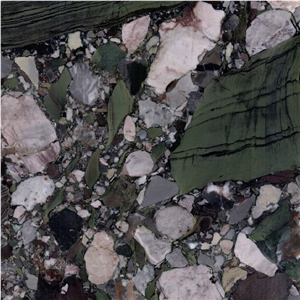 Additional Names:Les Quatre Saison Printemps Marble,The Four Seasons Spring Marble,Four Seasons Marble,Marbre Les Quatre Saison Printemps,Les Quatre Saison Été Marbre,Marbre Quatre Saisons,Les Quatre Saisons Marble,Marmor Les Quatre Saisons,Breccia Colorata Antiq Marble,Breccia Colorata Marble,Marbre Breccia Benou,Marmo Breccia De Vendome,Breccia Vendome Marble,Brecha Dome Marble,Breche De Vendome Marble,Marbre Brèche De Bénou,Brechia Du Vendome Marbre,Marmo Brescia Vendome,Breche Pyrenee Marble,Breche De Benou MarbleLes Quatre Saison Printemps Marble,The Four Seasons Spring Marble,Four Seasons Marble,Marbre Les Quatre Saison Printemps,Les Quatre Saison Été Marbre,Marbre Quatre Saisons,Les Quatre Saisons Marble,Marmor Les Quatre Saisons,Breccia Colorata Antiq Marble,Breccia Colorata Marble,Marbre Breccia Benou,Marmo Breccia De Vendome,Breccia Vendome Marble,Brecha Dome Marble,Breche De Vendome Marble,Marbre Brèche De Bénou,Brechia Du Vendome Marbre,Marmo Brescia Vendome,Breche Pyrenee Marble,Breche De Benou MarblePost Request
Additional Names:Les Quatre Saison Printemps Marble,The Four Seasons Spring Marble,Four Seasons Marble,Marbre Les Quatre Saison Printemps,Les Quatre Saison Été Marbre,Marbre Quatre Saisons,Les Quatre Saisons Marble,Marmor Les Quatre Saisons,Breccia Colorata Antiq Marble,Breccia Colorata Marble,Marbre Breccia Benou,Marmo Breccia De Vendome,Breccia Vendome Marble,Brecha Dome Marble,Breche De Vendome Marble,Marbre Brèche De Bénou,Brechia Du Vendome Marbre,Marmo Brescia Vendome,Breche Pyrenee Marble,Breche De Benou MarbleLes Quatre Saison Printemps Marble,The Four Seasons Spring Marble,Four Seasons Marble,Marbre Les Quatre Saison Printemps,Les Quatre Saison Été Marbre,Marbre Quatre Saisons,Les Quatre Saisons Marble,Marmor Les Quatre Saisons,Breccia Colorata Antiq Marble,Breccia Colorata Marble,Marbre Breccia Benou,Marmo Breccia De Vendome,Breccia Vendome Marble,Brecha Dome Marble,Breche De Vendome Marble,Marbre Brèche De Bénou,Brechia Du Vendome Marbre,Marmo Brescia Vendome,Breche Pyrenee Marble,Breche De Benou MarblePost Request France
-Marble
France
-Marble -
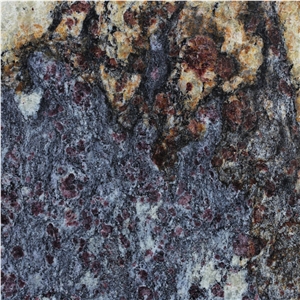 Additional Names:Purple Dunes Golden Granite,Purple Dune Granite,Purple Dunes GranitePurple Dunes Golden Granite,Purple Dune Granite,Purple Dunes GranitePost Request
Additional Names:Purple Dunes Golden Granite,Purple Dune Granite,Purple Dunes GranitePurple Dunes Golden Granite,Purple Dune Granite,Purple Dunes GranitePost Request Brazil
-Granite
Brazil
-Granite -
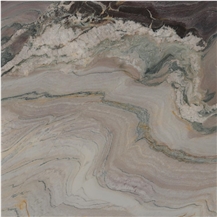 Additional Names:Acquarella Granite,Aquarello Quartzite,Aqua Royal Quartzite,Aquarela Quartzite,Aquarella Granite,Aquarela Gold Granite,In China Stone Market:紫气东来(Zǐ Qì Dōng Lái)Acquarella Granite,Aquarello Quartzite,Aqua Royal Quartzite,Aquarela Quartzite,Aquarella Granite,Aquarela Gold Granite,In China Stone Market:紫气东来(Zǐ Qì Dōng Lái)Post Request
Additional Names:Acquarella Granite,Aquarello Quartzite,Aqua Royal Quartzite,Aquarela Quartzite,Aquarella Granite,Aquarela Gold Granite,In China Stone Market:紫气东来(Zǐ Qì Dōng Lái)Acquarella Granite,Aquarello Quartzite,Aqua Royal Quartzite,Aquarela Quartzite,Aquarella Granite,Aquarela Gold Granite,In China Stone Market:紫气东来(Zǐ Qì Dōng Lái)Post Request Brazil
-Quartzite
Brazil
-Quartzite -
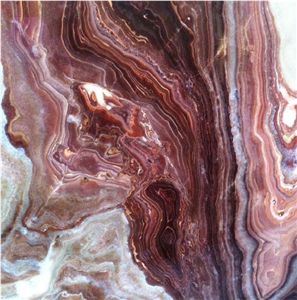 Additional Names:Red Violet Onyx,Onice Viola,Violet Red Onyx,Purple OnyxRed Violet Onyx,Onice Viola,Violet Red Onyx,Purple OnyxPost Request
Additional Names:Red Violet Onyx,Onice Viola,Violet Red Onyx,Purple OnyxRed Violet Onyx,Onice Viola,Violet Red Onyx,Purple OnyxPost Request Pakistan
-Onyx
Pakistan
-Onyx -
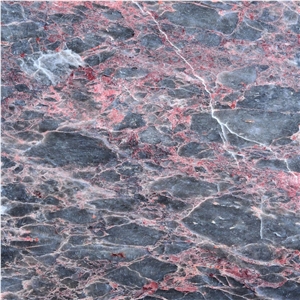 Additional Names:Ararat Salome Marble,Breccia Orientale Marble,Cristallino Salome,Eskisehir Supren Marble,Fior De Pesco Marble,Fior Di Pesco Marble,Fior Di Pesco Orientale,Marmor Salome,New Fior De Pesco Marble,New Fior Di Pesco,Saloma Marble,Salome Ararat,Salome Suepren Marble,Salome Supren,Salomi Marble,Salomon Marble,Suebrem,Sueprem,Supren Marble,Suprem Salome Marble,Supren Salome MarbleArarat Salome Marble,Breccia Orientale Marble,Cristallino Salome,Eskisehir Supren Marble,Fior De Pesco Marble,Fior Di Pesco Marble,Fior Di Pesco Orientale,Marmor Salome,New Fior De Pesco Marble,New Fior Di Pesco,Saloma Marble,Salome Ararat,Salome Suepren Marble,Salome Supren,Salomi Marble,Salomon Marble,Suebrem,Sueprem,Supren Marble,Suprem Salome Marble,Supren Salome MarblePost Request
Additional Names:Ararat Salome Marble,Breccia Orientale Marble,Cristallino Salome,Eskisehir Supren Marble,Fior De Pesco Marble,Fior Di Pesco Marble,Fior Di Pesco Orientale,Marmor Salome,New Fior De Pesco Marble,New Fior Di Pesco,Saloma Marble,Salome Ararat,Salome Suepren Marble,Salome Supren,Salomi Marble,Salomon Marble,Suebrem,Sueprem,Supren Marble,Suprem Salome Marble,Supren Salome MarbleArarat Salome Marble,Breccia Orientale Marble,Cristallino Salome,Eskisehir Supren Marble,Fior De Pesco Marble,Fior Di Pesco Marble,Fior Di Pesco Orientale,Marmor Salome,New Fior De Pesco Marble,New Fior Di Pesco,Saloma Marble,Salome Ararat,Salome Suepren Marble,Salome Supren,Salomi Marble,Salomon Marble,Suebrem,Sueprem,Supren Marble,Suprem Salome Marble,Supren Salome MarblePost Request Turkey
-Marble
Turkey
-Marble -
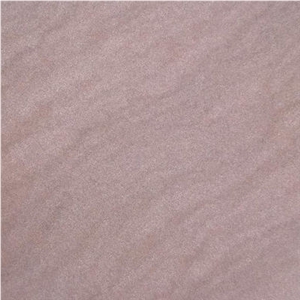 Additional Names:Purple Wooden Sandstone,Purple Rose Sandstone,Raj Purple Sandstone,Lilac SandstonePurple Wooden Sandstone,Purple Rose Sandstone,Raj Purple Sandstone,Lilac SandstonePost Request
Additional Names:Purple Wooden Sandstone,Purple Rose Sandstone,Raj Purple Sandstone,Lilac SandstonePurple Wooden Sandstone,Purple Rose Sandstone,Raj Purple Sandstone,Lilac SandstonePost Request India
-Sandstone
India
-Sandstone -
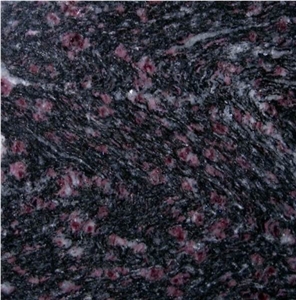 Additional Names:Preto Ametista Granite,Ametista Purple GranitePreto Ametista Granite,Ametista Purple GranitePost Request
Additional Names:Preto Ametista Granite,Ametista Purple GranitePreto Ametista Granite,Ametista Purple GranitePost Request Brazil
-Granite
Brazil
-Granite -
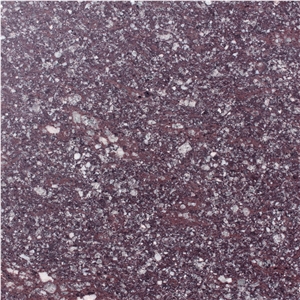 Additional Names:Porfido Monumentale,Violaceo Porfido,Porfido Pre Di Predazzoceo,Porfido Di Predazzo,Viola PorphyryPorfido Monumentale,Violaceo Porfido,Porfido Pre Di Predazzoceo,Porfido Di Predazzo,Viola PorphyryPost Request
Additional Names:Porfido Monumentale,Violaceo Porfido,Porfido Pre Di Predazzoceo,Porfido Di Predazzo,Viola PorphyryPorfido Monumentale,Violaceo Porfido,Porfido Pre Di Predazzoceo,Porfido Di Predazzo,Viola PorphyryPost Request Italy
-Porphyry
Italy
-Porphyry -
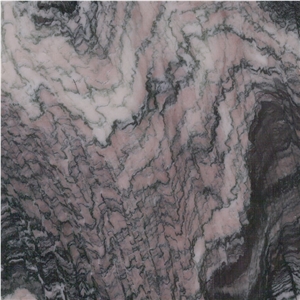 Additional Names:Marmi Cipollino Ondulato Rosso Marble,Cipollino Ondulato Red Marble,Marmi Cipollino Ondulato,Rosso Luana Marble,Majestic Ocean Marble,In China Stone Market:山水绿(Shānshuǐ Lǜ)Marmi Cipollino Ondulato Rosso Marble,Cipollino Ondulato Red Marble,Marmi Cipollino Ondulato,Rosso Luana Marble,Majestic Ocean Marble,In China Stone Market:山水绿(Shānshuǐ Lǜ)Post Request
Additional Names:Marmi Cipollino Ondulato Rosso Marble,Cipollino Ondulato Red Marble,Marmi Cipollino Ondulato,Rosso Luana Marble,Majestic Ocean Marble,In China Stone Market:山水绿(Shānshuǐ Lǜ)Marmi Cipollino Ondulato Rosso Marble,Cipollino Ondulato Red Marble,Marmi Cipollino Ondulato,Rosso Luana Marble,Majestic Ocean Marble,In China Stone Market:山水绿(Shānshuǐ Lǜ)Post Request Italy
-Marble
Italy
-Marble -
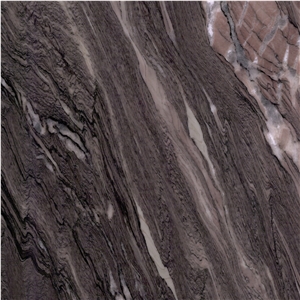 Additional Names:Majestic Ocean Marble,Rosso Luana Marble,Cipollino Ondulato Marble,French Purple Brown Marble,In China Stone Market:法国紫彩(Fàguó Zǐ Cǎi)Majestic Ocean Marble,Rosso Luana Marble,Cipollino Ondulato Marble,French Purple Brown Marble,In China Stone Market:法国紫彩(Fàguó Zǐ Cǎi)Post Request
Additional Names:Majestic Ocean Marble,Rosso Luana Marble,Cipollino Ondulato Marble,French Purple Brown Marble,In China Stone Market:法国紫彩(Fàguó Zǐ Cǎi)Majestic Ocean Marble,Rosso Luana Marble,Cipollino Ondulato Marble,French Purple Brown Marble,In China Stone Market:法国紫彩(Fàguó Zǐ Cǎi)Post Request Italy
-Marble
Italy
-Marble -
 Additional Names:Porfido Monumentale,Violaceo Porfido,Porfido Pre,Porfido Viola,Porfido Violaceo,Porfido Di PredazzoPorfido Monumentale,Violaceo Porfido,Porfido Pre,Porfido Viola,Porfido Violaceo,Porfido Di PredazzoPost Request
Additional Names:Porfido Monumentale,Violaceo Porfido,Porfido Pre,Porfido Viola,Porfido Violaceo,Porfido Di PredazzoPorfido Monumentale,Violaceo Porfido,Porfido Pre,Porfido Viola,Porfido Violaceo,Porfido Di PredazzoPost Request Italy - Porphyry
Italy - Porphyry
-
 Additional Names:Purple Symphony Granite,Symphony Granite,China Paradiso Granite,In China Stone Market:幻彩紫(Huàn Cǎi Zǐ)Purple Symphony Granite,Symphony Granite,China Paradiso Granite,In China Stone Market:幻彩紫(Huàn Cǎi Zǐ)Post Request
Additional Names:Purple Symphony Granite,Symphony Granite,China Paradiso Granite,In China Stone Market:幻彩紫(Huàn Cǎi Zǐ)Purple Symphony Granite,Symphony Granite,China Paradiso Granite,In China Stone Market:幻彩紫(Huàn Cǎi Zǐ)Post Request China - Granite
China - Granite
-

-
 Additional Names:Persian Purple Onyx,Onice PurplePersian Purple Onyx,Onice PurplePost Request
Additional Names:Persian Purple Onyx,Onice PurplePersian Purple Onyx,Onice PurplePost Request Iran - Onyx
Iran - Onyx
-
 Additional Names:Plum Slate,Ardesia Porpora,Purple SlatePlum Slate,Ardesia Porpora,Purple SlatePost Request
Additional Names:Plum Slate,Ardesia Porpora,Purple SlatePlum Slate,Ardesia Porpora,Purple SlatePost Request Brazil - Slate
Brazil - Slate
-
 Additional Names:Violaceo Porfido,Porfido Pre,Porfido Viola,Porfido Viola Di Predazzo,Porfido Violaceo,Porfido Di PredazzoViolaceo Porfido,Porfido Pre,Porfido Viola,Porfido Viola Di Predazzo,Porfido Violaceo,Porfido Di PredazzoPost Request
Additional Names:Violaceo Porfido,Porfido Pre,Porfido Viola,Porfido Viola Di Predazzo,Porfido Violaceo,Porfido Di PredazzoViolaceo Porfido,Porfido Pre,Porfido Viola,Porfido Viola Di Predazzo,Porfido Violaceo,Porfido Di PredazzoPost Request Italy - Porphyry
Italy - Porphyry
-
 Additional Names:Purple White Wave Marble,Purple Wave Red MarblePurple White Wave Marble,Purple Wave Red MarblePost Request
Additional Names:Purple White Wave Marble,Purple Wave Red MarblePurple White Wave Marble,Purple Wave Red MarblePost Request Iran - Marble
Iran - Marble
-
 Additional Names:Lilac Wenge Sandstone,Purple Wooden Sandstone,Purple Wenge Wooden Sandstone,Wooden Purple Sandstone,Purple Wood Sandstone,Purple Wood Grain Sandstone,In China Stone Market:紫木纹砂岩 (Zǐ Mù Wén Shāyán)Lilac Wenge Sandstone,Purple Wooden Sandstone,Purple Wenge Wooden Sandstone,Wooden Purple Sandstone,Purple Wood Sandstone,Purple Wood Grain Sandstone,In China Stone Market:紫木纹砂岩 (Zǐ Mù Wén Shāyán)Post Request
Additional Names:Lilac Wenge Sandstone,Purple Wooden Sandstone,Purple Wenge Wooden Sandstone,Wooden Purple Sandstone,Purple Wood Sandstone,Purple Wood Grain Sandstone,In China Stone Market:紫木纹砂岩 (Zǐ Mù Wén Shāyán)Lilac Wenge Sandstone,Purple Wooden Sandstone,Purple Wenge Wooden Sandstone,Wooden Purple Sandstone,Purple Wood Sandstone,Purple Wood Grain Sandstone,In China Stone Market:紫木纹砂岩 (Zǐ Mù Wén Shāyán)Post Request China - Sandstone
China - Sandstone
-
 Additional Names:Purple Pearl Granite,Rautavaara Lilac Pearl Granite,Rautavaara Pearl GranitePurple Pearl Granite,Rautavaara Lilac Pearl Granite,Rautavaara Pearl GranitePost Request
Additional Names:Purple Pearl Granite,Rautavaara Lilac Pearl Granite,Rautavaara Pearl GranitePurple Pearl Granite,Rautavaara Lilac Pearl Granite,Rautavaara Pearl GranitePost Request Finland - Granite
Finland - Granite
-
 Additional Names:Penrhyn Slate,Penrhyn Unfading PurplePenrhyn Slate,Penrhyn Unfading PurplePost Request
Additional Names:Penrhyn Slate,Penrhyn Unfading PurplePenrhyn Slate,Penrhyn Unfading PurplePost Request United Kingdom - Slate
United Kingdom - Slate
-
 Additional Names:Purple Rose Granite,In China Stone Market:紫珍珠(Zǐ Zhēnzhū)Purple Rose Granite,In China Stone Market:紫珍珠(Zǐ Zhēnzhū)Post Request
Additional Names:Purple Rose Granite,In China Stone Market:紫珍珠(Zǐ Zhēnzhū)Purple Rose Granite,In China Stone Market:紫珍珠(Zǐ Zhēnzhū)Post Request China - Granite
China - Granite
-

-

-
 Additional Names:Purple Grain Sandstone,New Purple Grain Sandstone,Lilac Sandstone,Purple Grainy Sandstone,Purple Wooden Sandstone,Lilac Wenge Sandstone,Purple Wenge Wooden Sandstone,Wooden Purple Sandstone,Purple Wood Sandstone,Purple Sandstone with Wood Grain,In China Stone Market:紫木纹砂岩(Zǐ Mù Wén Shāyán)Purple Grain Sandstone,New Purple Grain Sandstone,Lilac Sandstone,Purple Grainy Sandstone,Purple Wooden Sandstone,Lilac Wenge Sandstone,Purple Wenge Wooden Sandstone,Wooden Purple Sandstone,Purple Wood Sandstone,Purple Sandstone with Wood Grain,In China Stone Market:紫木纹砂岩(Zǐ Mù Wén Shāyán)Post Request
Additional Names:Purple Grain Sandstone,New Purple Grain Sandstone,Lilac Sandstone,Purple Grainy Sandstone,Purple Wooden Sandstone,Lilac Wenge Sandstone,Purple Wenge Wooden Sandstone,Wooden Purple Sandstone,Purple Wood Sandstone,Purple Sandstone with Wood Grain,In China Stone Market:紫木纹砂岩(Zǐ Mù Wén Shāyán)Purple Grain Sandstone,New Purple Grain Sandstone,Lilac Sandstone,Purple Grainy Sandstone,Purple Wooden Sandstone,Lilac Wenge Sandstone,Purple Wenge Wooden Sandstone,Wooden Purple Sandstone,Purple Wood Sandstone,Purple Sandstone with Wood Grain,In China Stone Market:紫木纹砂岩(Zǐ Mù Wén Shāyán)Post Request China - Sandstone
China - Sandstone
-
Are there color variations of Namibia's Diabas Omenje Granite?Yes, there are color variations of Namibias Diabas Omenje Granite. The granite typically comes in shades of dark green or black, but there may be variations in the intensity of color, presence of patterns or veins, and overall appearance. Some stones may have lighter or darker patches, flecks of other colors, or different textures, which adds to the beauty and uniqueness of each piece.Read More
-
Is India's Verde Venato Granite an expensive stone?I dont have access to current pricing data. However, the cost of Verde Venato Granite can vary based on factors such as the quality, availability, and demand. It is always advisable to check the current market rates and consult with a professional before making a purchase.Read More
-
Can Brazil's Cocada Green Quartzite be used in a bathroom?Yes, Brazils Cocada Green Quartzite can be used in a bathroom. It is a durable and moisture-resistant material that can withstand the humid environment of a bathroom. However, it is important to seal the stone properly to prevent any staining or damage from water and other bathroom products.Read More
-
Can Hungary's Mediterranean Gold Limestone be used in landscaping?Yes, Hungarys Mediterranean Gold Limestone can be used in landscaping. It is a type of limestone with a beautiful golden color and unique patterns, making it an attractive choice for various landscaping projects. It can be used for pathways, patios, garden walls, stone structures, and other outdoor features. The durability and natural aesthetic of the limestone make it a versatile option for landscaping design.Read More
-
What grade is Brazil's Amarelo Real Granite?I cannot access current information. However, typically granite is not graded by a number or letter system like some other materials. The value and quality of granite are determined by factors such as color, pattern, and overall appearance. Brazilian Amarelo Real Granite is considered a higher-end stone due to its unique golden and yellowish tones.Read More
-
How can I make Golden Rose Cream Marble floors not slippery?There are several steps you can take to reduce the slipperiness of Golden Rose Cream Marble floors: 1. Clean the floor regularly: Regular cleaning helps remove any dirt or dust that may make the floor more slippery. Use a pH-neutral cleaner specifically formulated for marble surfaces and follow the manufacturers instructions. 2. Use non-slip rugs or mats: Place non-slip rugs or mats in high-traffic areas, such as entryways or bathrooms, to provide an extra layer of traction and absorb any moisture from shoes or spills. 3. Apply a marble floor sealer: Use a specifically designed marble floor sealer to create an invisible protective barrier on the surface, which can reduce the slipperiness of the marble. Follow the manufacturers instructions for application and reapplication. 4. Implement non-slip treatments: Non-slip treatments like anti-slip coatings or polishes can be applied to the marble floor. These products are designed to increase the traction of the floor surface and reduce the risk of slipping. Ensure that you use products specifically formulated for marble. 5. Keep the floor dry: Wipe up any spills or moisture immediately to prevent the marble floor from becoming slippery. Place absorbent mats near sinks or bathtubs to absorb excess water. 6. Use appropriate footwear: Avoid walking on the marble floor with wet or slippery shoes. Opt for clean, dry footwear or slip-resistant shoes to minimize the risk of slipping. Remember, marble is naturally more slippery than other flooring materials, so it is essential to take precautions to reduce slipperiness and prevent accidents.Read More
-
Are there color variations of Finland's Amadeus Granite?Yes, there can be variations in the color of Finlands Amadeus Granite. The base color of Amadeus Granite is typically a light grey or white, but it can also have varying shades of pink, brown, or black minerals scattered throughout the stone. These natural variations in color are due to the different mineral compositions and geological formations that occur during the granites formation process. Each slab of Amadeus Granite can have its own unique combination of colors and patterns, making it a sought-after choice for countertop and flooring applications.Read More
-
Is Celeste Argentina Marble an expensive stone?I do not have access to current market prices for specific stones. However, marble is generally considered a luxury building material and tends to be more expensive than other types of natural stone. The price of Celeste Argentina Marble would depend on factors such as availability, quality, and market demand.Read More
-
Is Brazil's Angel White Granite an expensive stone?I dont have access to real-time market prices of the Angel White Granite in Brazil. However, granite is generally considered one of the more affordable natural stone countertop options. The cost can vary depending on various factors such as the quality, color, and availability of the stone. It is best to consult with a professional granite supplier for accurate pricing information.Read More
-
Is Iran's Andezit Grey Andesite an expensive stone?I dont have access to the current market price of stones. However, the price of Andesite Grey stone can vary depending on various factors such as quality, quantity, location, and supplier. Its recommended to seek advice from a professional in the stone industry or a supplier for current prices and information.Read More
-
Can India's Lotus Green Granite be used in landscaping?Yes, Indias Lotus Green Granite can be used in landscaping. It is a durable and versatile natural stone that is commonly used for various landscaping applications such as paving, walkways, retaining walls, garden edging, and decorative features. Its attractive green color with specks of grey and black adds an aesthetic appeal to outdoor spaces. Additionally, its resistance to weathering and low maintenance requirements make it a popular choice for landscaping projects.Read More
-
Can Turkey's Zebrina Marble be used exterior applications in very dusty climates?Turkeys Zebrina Marble can be used for exterior applications in dusty climates, but it may require some additional care and maintenance. Marble is a natural stone that can be affected by weathering, environmental factors, and dust accumulation. In dusty climates, the marble may require regular cleaning to prevent dust buildup and maintain its appearance. Regular cleaning with a mild detergent and water, along with periodic pressure washing, can help remove dust and keep the surface clean. It is also important to seal the marble properly to protect it from dust, stains, and other potential damage. A good quality impregnating sealer specifically designed for marble is recommended. The sealer should be applied periodically, as instructed by the manufacturer, to maintain its protective properties. In extremely dusty climates, it may be necessary to clean the marble more frequently and take additional measures such as installing covers or implementing preventive measures to reduce dust accumulation on the surface. Overall, while Turkeys Zebrina Marble can be used for exterior applications in dusty climates, it is important to maintain regular cleaning and sealing routines to ensure its durability and aesthetic appeal.Read More
-
Is China's Brown Grain Granite an expensive stone?I dont have d pricing information for various granite types, but Brown Grain Granite is a natural stone, so its price varies depending on factors such as type, quality, availability, and supplier. However, in general, granite is considered one of the more expensive natural stones due to its durability, uniqueness, and appeal.Read More
-
Can Italy's Bianco Maremma Travertine be used outdoors?Yes, Italys Bianco Maremma Travertine can be used outdoors. Travertine is a highly durable and weather-resistant natural stone, making it an excellent choice for outdoor applications such as patios, pool decks, and walkways. However, it is important to note that travertine is a porous material, and sealing it is recommended to protect it from stains and the effects of weathering.Read More
-
Can Portugal's Marron Monchique Granite be used in a bathroom?Yes, Portugals Marron Monchique Granite can be used in a bathroom. Granite is a durable and water-resistant material that makes it suitable for use in wet areas like bathrooms. It can be used for countertops, backsplashes, vanity tops, and even as tiles for flooring or wall cladding. With proper sealing and maintenance, Marron Monchique Granite can add a luxurious and sophisticated touch to your bathroom.Read More
-
How thick is China's Visa Gold Granite slabs?The thickness of Chinas Visa Gold Granite slabs can vary depending on customer preferences and requirements. Generally, granite slabs have thicknesses ranging from 2 centimeters (0.75 inches) to 3 centimeters (1.25 inches). However, it is recommended to consult with the supplier or manufacturer to determine the exact thickness options available for Chinas Visa Gold Granite slabs.Read More
-
Can India's P White Granite be used exterior applications in hot climates?Yes, Indias P White Granite can be used for exterior applications in hot climates. Granite is a durable and heat-resistant natural stone that is suitable for outdoor use. It can withstand high temperatures and is not affected by extreme weather conditions such as UV rays, direct sunlight, or heat. Additionally, granite is resistant to staining, scratching, and fading, making it an ideal choice for outdoor surfaces in hot climates.Read More
-
Can Iran's Lightning Marble be used in a bathroom?I do not have the expertise to determine the specific guidelines for using materials in a bathroom. However, based on the information available online, it appears that certain types of stone, including Lightning Marble, can be used in bathroom areas. However, it is important to consider factors such as water absorption, slip-resistance, and maintenance requirements before using any natural stone in a wet environment. Consult with a professional before making a final decision.Read More
-
How thick is China's Pearl Flower Granite slabs?The thickness of Chinas Pearl Flower Granite slabs can typically vary between 2 centimeters (0.79 inches) and 3 centimeters (1.18 inches). However, its important to note that the thickness can be customized based on individual preferences and requirements.Read More
-
Are there color variations of Greece's Rosa Egeo Marble?Yes, there are color variations of Greeces Rosa Egeo Marble. It can range from light pink to dark pink with occasional white veining. Some slabs may have more pronounced veining or be more uniform in color. The exact color variation can depend on the specific quarry and location where the marble is sourced.Read More






